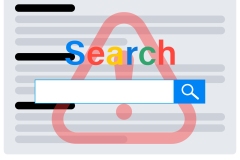As a small business owner, you know you need an SEO strategy — but you might not know what SEO actually is (or what it can do). That’s OK; it’s normal to feel confused and even intimidated if you’re not a professional marketer.
So, here are the basics: SEO stands for “search engine optimization.” It’s the discipline of making your business more findable online. Searchability is critical no matter what industry you’re in. If your company can’t be found when and where customers are searching, then you’re out of luck.
The Secrets to Successful SEO
Unfortunately, many small business owners assume that developing an SEO strategy requires a lot of time and money. Research from The Manifest reflects this: In 2019, only about one-third of small businesses had SEO strategies.
SEO doesn’t have to break the bank.
Yes, SEO doesn’t have to break the bank — but it does take time for the results to snowball and impact the bottom line, but it doesn’t need to be a huge investment.
Luckily, you can leverage the basics of SEO without earning a marketing certificate or degree. You just have to implement and stick to a few practices. The secret to SEO is consistency, not dollars. Even if a competitor is outranking you for certain keywords on Google, Bing, YouTube, or any other search engine, you can boost your reputation through straightforward techniques.
Here are a few strategies I recommend:
1. Ensure You Have These Three Digital Assets.
Before you can reap the full benefits of SEO, you will need three things: a Google My Business page, a YouTube channel, and a website. (You probably already have a website — 71% of small businesses did as of 2021, according to Top Design Firms.)
So, why should you invest in these three digital assets? Let’s start with your Google My Business page. A GMB page is the fastest way to be found online in a geographic territory. If you own a restaurant and someone searches “restaurants near me,” you want your business to appear in the results.
Even if you don’t think you’ll get much business from local searches, it’s still important to have a GMB page to round out your SEO strategy. As for your YouTube channel and website, they’re non-negotiable. These assets will provide you with global reach as you move forward in your strategy.
2. Know Your Business Category.
When customers are talking about your business, what words do they use? Keep these in mind when you’re describing what you do online. For instance, you could say, “I’m a pipe specialist who uses metal and plastic to carry liquids.” But everyone else would call you a plumber. And when they need a plumber, they’ll search for that word.
From a search engine perspective, you need to know which sandbox you’re playing in. You can’t get too creative with how you describe yourself; you need to be clear. Consider what your ideal customer would search for and use those words — even if you think they don’t completely describe your business.
This is how you show up on more search results pages and in front of more customers. Here’s an example: I have a friend who can do a wide variety of restorations. Guess what phrase he uses for his SEO strategy? Furniture restoration. People search more for this term than any other word associated with his work.
Ironically, he gets tons of car restoration business through furniture restoration-related keywords. He doesn’t know anything about SEO, but he thinks like his customers and knows his category, which gives him an advantage.
3. Use Your Customers’ Language.
SEO is not about saying exactly what you want to say. Remember this rule when creating content for your website, blog, and YouTube channel. You have to speak your audience’s language. So, read their comments, referrals, and feedback, then think critically about the words and phrases your customers use.
Don’t try to use fancy technical jargon. Just speak plainly and clearly.
And remember, what’s ordinary for you can be extraordinary for someone who doesn’t know or understand your craft. Try to incorporate straightforward questions and phrases that mimic what searchers might type, such as “best pizza in Memphis” or “cheap men’s running shorts.” These specific phrases are considered long-tail keywords and encourage up to 6% more clicks than shorter phrases, according to Smart Insights.
How will you know what keywords will steer more prospects your way? Try using any of these three software tools: BuzzSumo, AnswerThePublic, or SparkToro. None of them are meant specifically for SEO because they’re more ideation-based than anything else. However, each one can be immensely helpful in crafting content.
4. Be Congruent Across Your Digital Sites.
Don’t forget to make sure that everything about your business aligns across your Google My Business page, YouTube channel, and website content. This is very important, especially for your GMB page. The name, address, phone number, and other business information on your GMB page should match what’s listed on your website.
If anything changes, such as an address during relocation or your phone number during a rebrand, make sure to update all of your digital assets. They won’t update on their own. The last thing you want is for your GMB page to have outdated information.
As a side note, be sure that you list your hours of operation on every asset. Try to be open seven days a week if you don’t have a retail location, even if you don’t answer the phone at 9 p.m. on Tuesdays or 11:30 a.m. on Sundays. (Just be sure that your voicemail message says when you’ll call people back.) The more often you’re open, the more SEO hits you’ll get when people search for what you offer.
Become Findable
You are an expert at what you do, and the world deserves to know –– but first, they need to be able to find you. Luckily, SEO isn’t as difficult as it seems. If you manage your digital assets, create content regularly, and consistently update your information, you’ll already be ahead of the game. Your rankings will improve over time, and you’ll become radically more findable. Now — go put yourself out there.
Featured Image Credit: Provided by the Author; Nisonco; Unsplash; Thank you!










